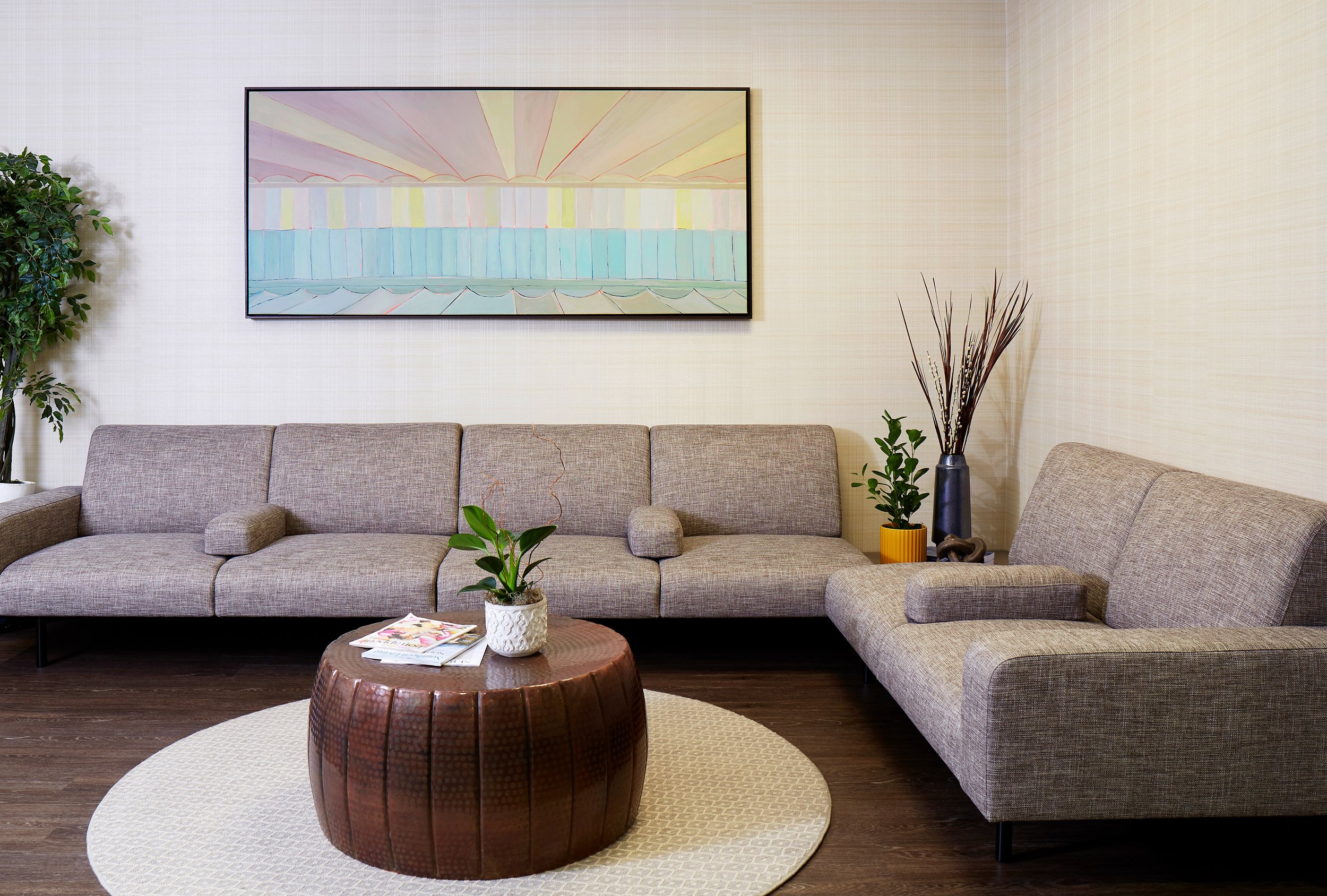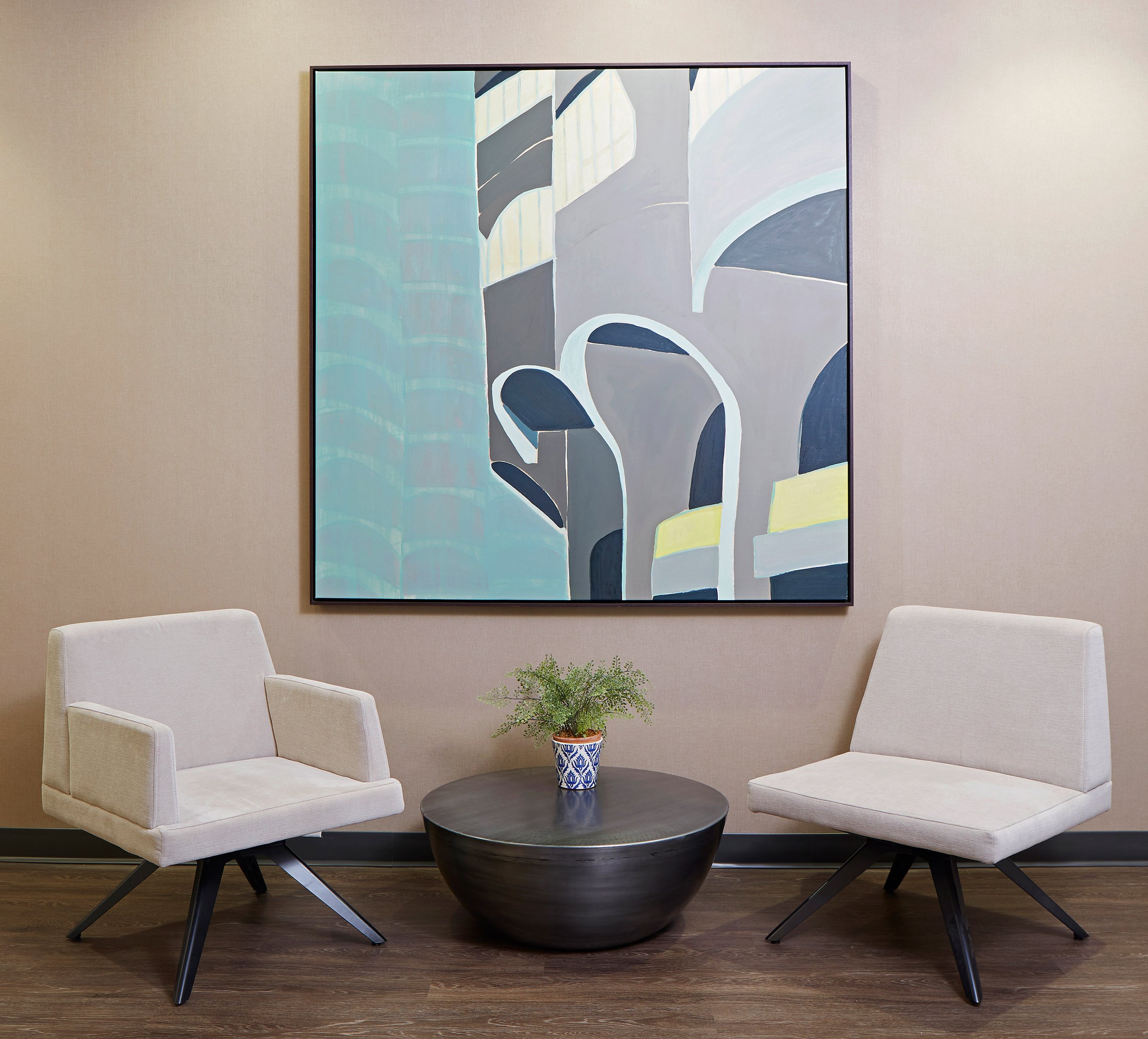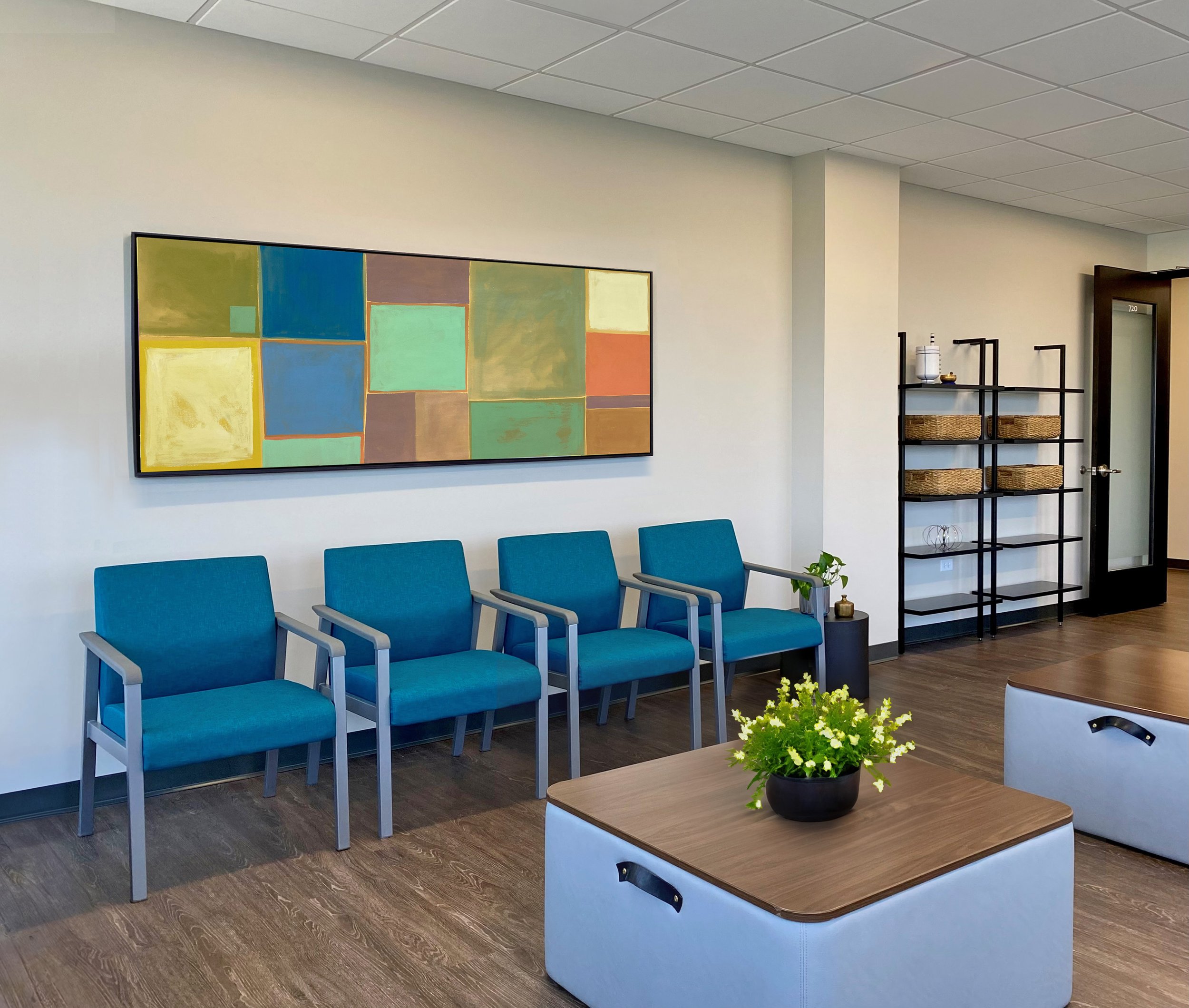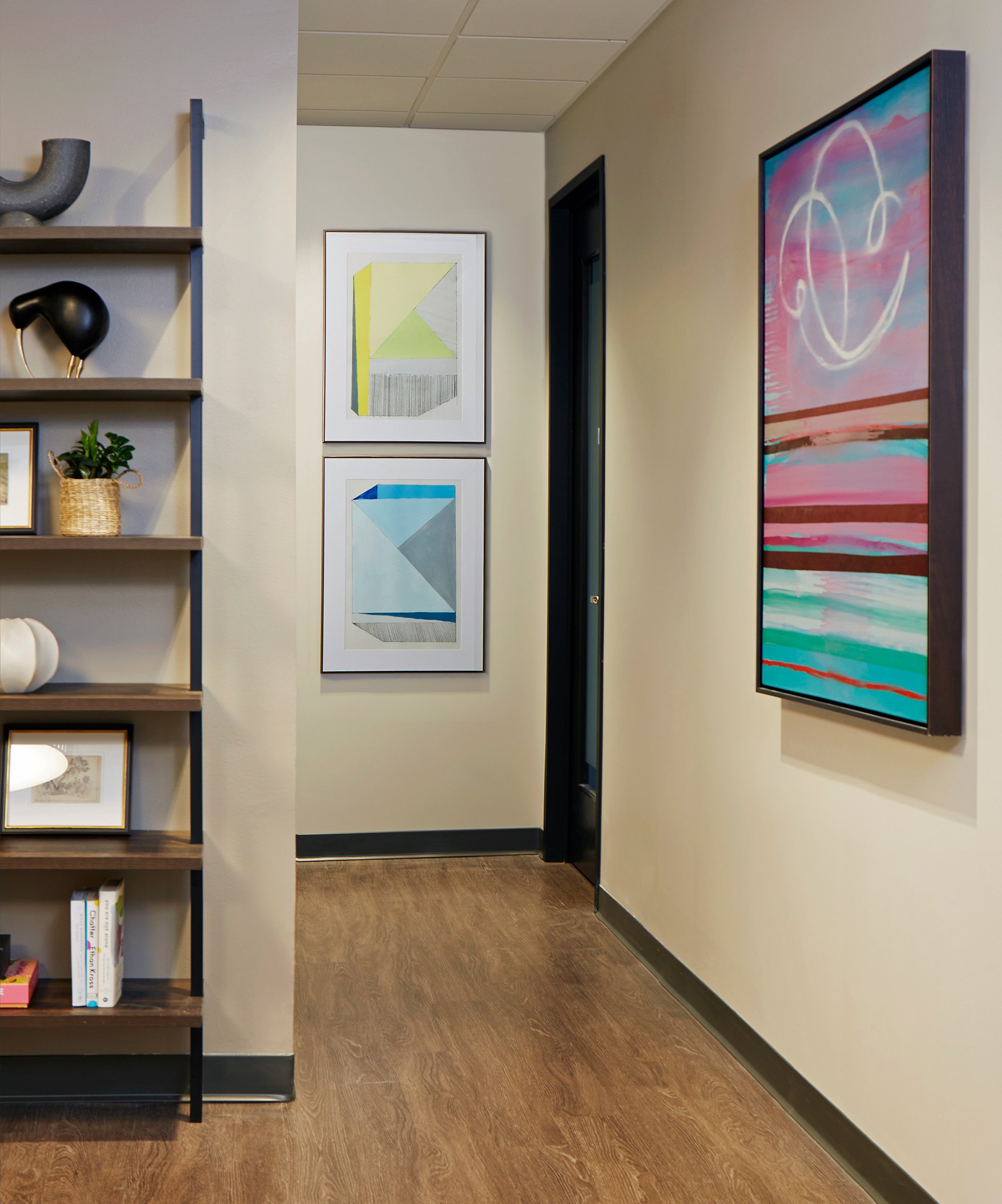Interior Design and Mental Health
Well-Being Starts with a Healing Environment
Epic Interiors focuses on wellness design for healthcare, corporate, and residential spaces.
We specialize in mental health facilities and have completed 20+ projects throughout the United States over the last decade. We design interiors to soothe and revitalize–spaces that cultivate a greater sense of comfort and well-being. The clinicians we work with are much more than just clients. We have strong relationships that prioritize collaboration and deeply understand their needs. We also recognize the home as a space of refuge and safety. Remember that the wellness design principles for healthcare can easily translate to a healing-focused home. Let's look at some actions we can take to promote mental health in our spaces.
“The art and design set the tone for a client experience from minute one and “bring the space to life,” which mirrors what our clients go through in terms of connecting to a life worth living – what does that look like, what do they need to do to get there, and what do they need to accept to get there. The staff feels cared about within our vibrant, usable interior, meant to give space while enhancing a sense of community. Clinical work is much easier when clients feel comfortable, safe, and secure in our environment.”
The need to connect with nature is in our DNA.
Spending too much time indoors can take a toll on our mental health. Designers have long understood the need to bring the outdoors inside by using natural materials, taking advantage of curves, and referencing organic-inspired forms and patterns in art. Color also plays a crucial role; mossy greens, watery blues, or colors that evoke a sunset can create a soothing and safe atmosphere to reduce stress and produce a therapeutic effect. The better we feel indoors, the greater our well-being.
“Art and ambiance help patients relax and feel comfortable in the therapeutic space. It calms the nervous system and adds warmth and a personal touch to our hard work. It can also be interesting and inspiring. Patients are often ambivalent about treatment and recovery; a beautiful healing space can assist with motivation for recovery.”
Interior design can have a significant impact on mental health and well-being.
A well-designed interior can create spaces that are calming, comfortable, and supportive of positive emotions. Here are some fundamental principles to consider.
Natural Light
Maximize it to improve mood.
Biophilic Design
Incorporate elements of nature, including plants, natural materials like wood and stone, and nature-inspired artwork.
Color Psychology
Choose colors that have a soothing effect, such as soft blues, greens, and earthy tones.
Comfortable Furniture
Soft, cushioned seating can be incredibly soothing.
Clutter-Free Spaces
Clutter can contribute to stress and anxiety. Create storage solutions to keep belongings organized and out of sight. Minimize unnecessary objects to create a clean, open environment.
Wellness Spaces
Designate a specific area for wellness activities, such as yoga, meditation, or exercise. Ensure that this space is comfortable and inviting.
Art and Decor
Nature-oriented abstract art can be a powerful tool for promoting mental well-being. It can evoke feelings of calm, connection with the natural world, and a sense of wonder. The art can represent the flow and movement of nature by using organic shapes, curves, and fluid lines to mimic how natural elements interact and change.
“We are deeply committed to creating meaningful experiences through art for our clients. Building thoughtful and cohesive art programs to enhance our client’s spaces, we emphasize works that soothe and engage through color, beauty, and thematic content. ”
Consider the size of the artwork and where it will be placed.
Big paintings can make a bold statement, while smaller pieces can be used in more intimate settings. The placement of the artwork should encourage contemplation and relaxation. Consider commissioning a custom work for a focal wall that reflects your connection to nature or a place.
Strive for balance and harmony.
Nature is often characterized by symmetry and balance, which can create a sense of order and calm in the viewer. Use art to express emotions and feelings inspired by nature. The art collection can convey a sense of awe, serenity, or even the dynamic forces of the natural world.
Curatorial Guidance
Consider seeking guidance from a professional curator or art advisor who can help select or create art that aligns with your space's specific mental well-being goals. A professional will guide you throughout the process, including help with setting a budget, themes, art locations, scale, framing, installation, and ensuring a cohesive collection with a thoughtful layout flow throughout your space.



















